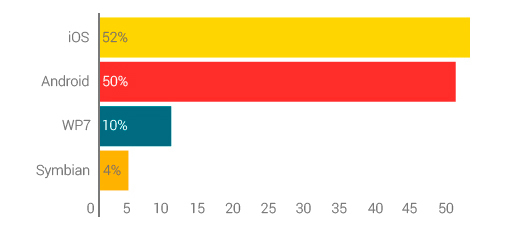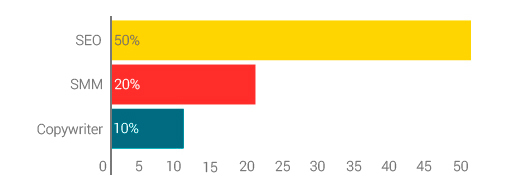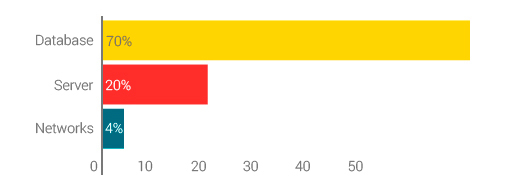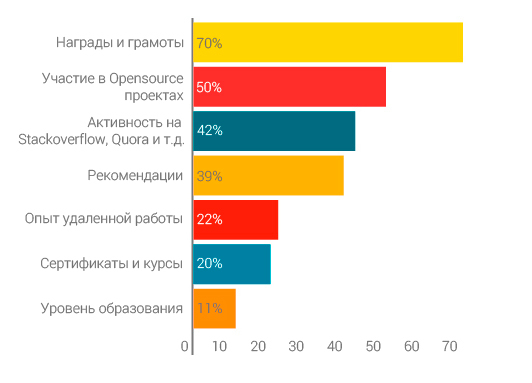Cognitive research: What specialists and technologies are now in demand in the remote work market?

"Eh, still around the ball to wave ..."
Hello! Perhaps, each of us, sooner or later, begins to think about remote work in the light of the latest trends in the IT world. Of course, this way of life is not for everyone, because it requires an incredible level of self-organization and motivation from us. However, the prospects to work without being tied to a particular place are forcing an increasing number of developers to look towards remote work.
')
As well as any cardinal change of situation, the transition to the remote form of work is associated with a large number of issues and pitfalls. Perhaps the most important issues include the following:
- Where to find this most distant work?
- What you need to know and be able to?
- How much do employees get at remote work?
We also decided to look for answers to these questions. As a result, our curiosity has grown into a very informative study. Interesting? Then welcome under the cat!
Not so long ago, we created a small service that sends out free resumes of candidates looking for remote work, according to the list of employers. With our idea, we hit the pages of the Product Hunt project, received useful feedback and a list of more than 200 companies that subscribed to receive a resume of potential employees. Within each newsletter, we interviewed most of the companies and employees interested in our service, which allowed us to compile a fairly detailed report. Hopefully, he will dispel some of your doubts and help you take the first step towards the search for distant work.
Survey participants: Companies
As mentioned above, as part of our mailing list, we sent trivial questions to companies. 200 companies took part in the survey, most of which are startups.
We asked them to name the approximate annual turnover so that it would be possible to estimate (albeit indirectly) how much such companies are willing to spend on their employees. So, the average annual turnover of the surveyed companies:

Interest from small companies is quite justified. The cost of maintaining a remote employee is several times less than the cost of an employee in the state, since it does not have to be spent on renting an additional workplace and incurring other office expenses. And insurance claims, which companies are so afraid of at the very start, can occur only in the nightmare of the head of the personnel department after an irregular working day.
If we talk about the design of the official invitation and work visa, then this scenario is nipped in the bud, since small companies simply cannot afford it.
In turn, the practice of hiring remote employees from another country for a large organization would seem to be quite popular, but do not rejoice ahead of time. The fact is that among the local population there are, to put it mildly, quite a lot of people who want to get remote work. For any organization, the decision to hire a citizen of their country for a “remote” looks both more convenient and more practical, since your lack of the necessary documents (for example, SSN in the USA) will not allow you to do it legally. No large and public company will violate the law for the sake of one employee.
There are cases of mass outsourcing of project development, for example, in India. But in this case, the cost of organizing such an event will pay for itself in the long term due to cheap labor. But we are not interested in this option in advance. Changing work at the office to a remote one, in order to spend extra hours on occasional orders from freelancing exchanges is not our method. There are, of course, cases of individual invitations with the design of all the necessary documents, but for this you have to fight for a place with several million developers from the same India.
Survey participants: Applicants
It is noteworthy that the average age of all applicants who took part in our study - and there were 314 of them (we managed to process just as many resumes during the existence of our service) - was well over 20.


Most of those who took part in the experiment had a family, and half of them already had children. The overwhelming majority, of course, indicated proficiency in foreign languages, and some made it clear that they knew more than one language, not counting their mother tongue.
Demand and geography
Using the solutions from Google Analytics to track incoming traffic, as well as connecting data from company surveys, we were able to map the geographic location of the companies that showed the most interest to remote employees.

Most of the companies that use the services of such employees are in the United States. It was there that the very first employers appeared who successfully used this method of cooperation.
Demand dynamics
After questioning the company about how many employees there are, how many were, and how many they would still like to hire, we were able to make a chart that reflects the dynamics of demand. The ordinate shows the average number of remote employees per company.

As you can easily see, there is a very positive trend on the chart. And if you believe the employers' answers regarding the number of future employees, the following picture expects us:

Technology demand
If you are plagued by vague doubts about whether your skills are interesting in the remote work market, we have built the following diagram especially for you. It reflects the percentage of work areas that companies noted when they signed up.
General indicators:

Front-End:

Back-End:

App Developer:

Marketing Manager:

System Administrator:

We also determined what specialists are missing in the market. These are the future employees, the demand for which is not satisfied with the offer. In this case, the proposal is expressed in the number of resumes sent to us, which indicates one or another skill of a specialist.

Salary level
This is perhaps one of the most important indicators that can be for you the main indicator in deciding whether to change work in the office to a remote job. Below is a chart of profitability in popular work areas. The graph shows the level of salaries for the year. Some areas had to be combined, since it was not possible to obtain data for each area.

Type of employment
We draw your attention to the fact that distant work for a company is different from freelancing, because most employers show interest in full-time work. Collective problem solving will require you to participate in those hours when the main office is working. Below is a diagram that shows the shares of offers for full-time and part-time work, as well as internships.

Expectations from applicants
Another of the most important issues is the height of the bar for entering the remote work market. Of course, if you have no work experience at all or you are a student from yesterday, you should wait a little bit with the search, since your efforts can be wasted. At the same time, it is worth noting that cases of hiring for an internship are quite common, but, as a rule, the level of salaries in this case may be completely uninteresting for the candidate. Sometimes, for example, in the middle lane of our vast country you can find work with a higher level of salary and lower requirements. However, if you will be pleased to get a solid line “You have been trained in a company from the UK” in a resume or you just need to acquire the same work experience, the absence of which becomes an obstacle for you, then you can certainly use this solution.
So, the diagram below shows the experience that companies expect from future teleworkers.

The following diagram shows what employers are interested in besides work experience.

What tools are popular with employers?
An important aspect in the organization of work of remote employees are tools for monitoring the quality of work performed and communications, as well as tools that simplify interaction in the virtual office environment. Below is a diagram that graphically displays the popularity of certain services used by employers. If you have never encountered any of them, we recommend that you at least familiarize yourself with the most common tools so that you do not have to feverishly fill in the knowledge gaps when applying for a job.
Most Popular Version Control Systems

The most popular messengers for corporate work

Summing up, I want to finish on the same note, on which we began our story. Remote work is an incredible opportunity to free yourself from the daily routine that awaits you in the office from Monday to Friday, say from 10.00 to 19.00. At the same time, it is necessary to understand that such work has its own specifics, and perhaps that is why it will be easier for some to visit the office, adhering to the standard schedule. Otherwise, work from home can turn into a real nightmare, where every time you have to literally force yourself to sit at the computer to write at least a couple of lines of code.
As practice shows, work on yourself, your motivation and the overwhelming desire to realize those most cherished dreams (which, as you know, everyone has their own) will open for you a previously unknown world of distant work. And if you can hone the skills of self-control, then you will have an incredible supply of free time - it is difficult to imagine, working daily in the office.
We sincerely hope that this report will be useful to all those who, like us, would like to free themselves from the shackles of the office routine.
Thank you for attention! And good luck in search of the remote work of your dreams!
PS To generate a report, we used only the data that was obtained in our survey. Figures may differ from official reports.
Source: https://habr.com/ru/post/293140/
All Articles